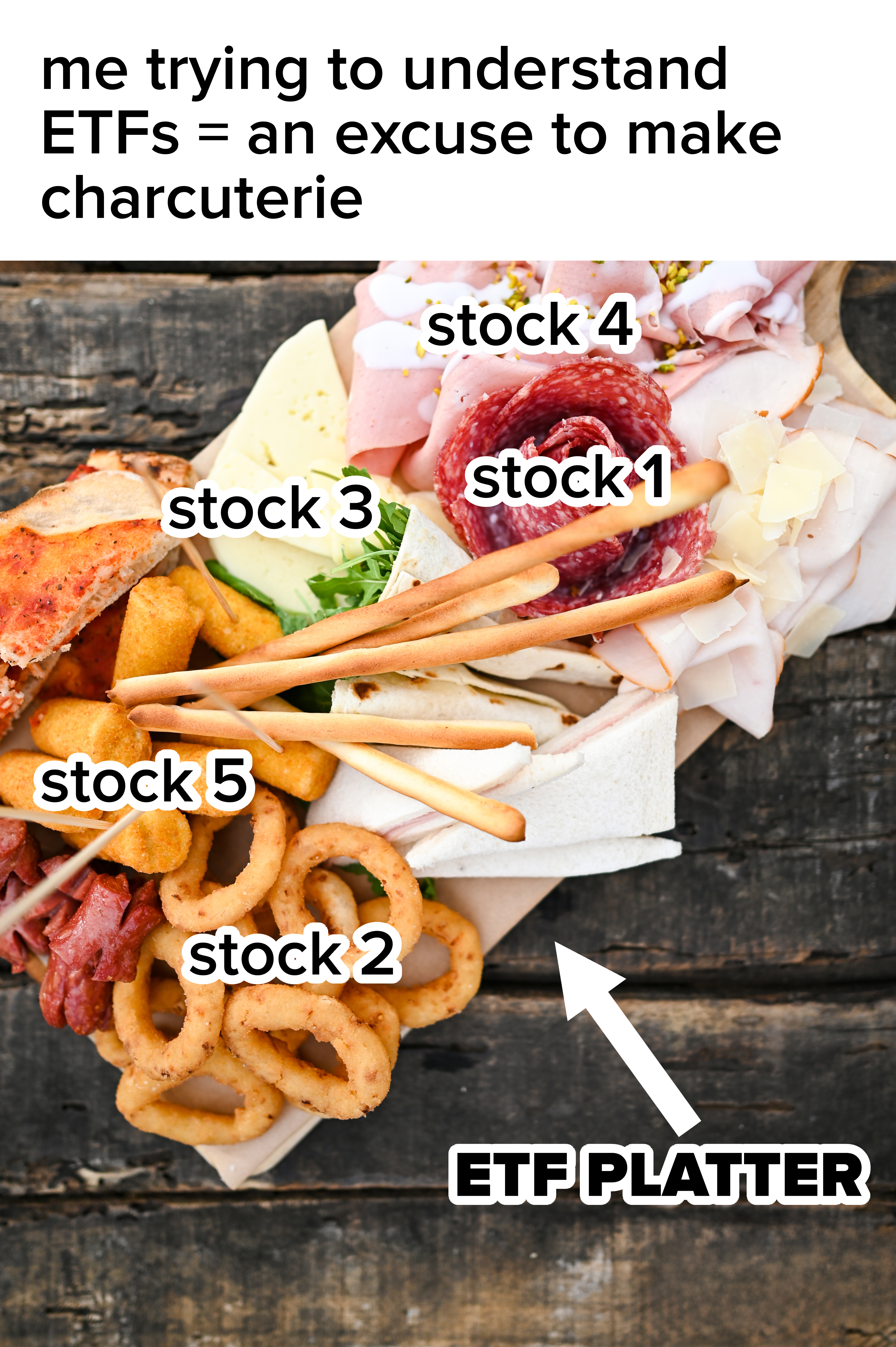You’ve probably heard of stocks, which represent ownership of a company (like Apple or Coca-Cola), but you might not know about ETFs, short for ‘exchange-traded fund’. They’re like stocks in that you can buy and sell them on the stock exchange but they’re a mix of different elements like stocks, bonds and other assets.
Sounds confusing but it’s not, says Victoria Harris, co-founder of The Curve, a financial education platform with easy-to-digest courses that translate industry jargon. You can sign up for individual courses or a membership that lets you access them all for a limited time. Harris calls herself a late bloomer in investing in ETFs but says she’s now obsessed.
Here, she shares three things to know about ETFs so you can start investing in them too. And who knows – you might also become obsessed.
1. ETFs are generally safer to invest in than stocks.
Harris describes an ETF as a “basket” of investments, a “pick-n-mix of different things”. When you buy an ETF, you’re basically buying a little of everything in that basket. Harris likens it to ordering an antipasto platter at a restaurant. You get to try a bit of everything without committing to ordering just one dish.

“I love that I can invest in any trend of theme without having to spend hours researching a bunch of different companies,” she says. “I currently invest in a Japanese ETF, a broad US stock market ETF (the S&P 500), a clean energy ETF and an AI ETF. That’s over a thousand companies. By essentially buying ‘one share’ in the ETF, you get instant diversification to hundreds, even sometimes thousands, of different companies.”
Harris says ETF investing is a type of “passive investing” or “lazy investing”. She likes to call it a form of “smart investing” as ETFs are low-cost and provide great diversification with something for everyone.
“They’re super diverse, so instead of putting all your money into one company, an ETF spreads it across a bunch, which can help lower your risk,” says Harris.
2. ETFs come in all shapes and sizes.
So how do you know which ETF to buy? There’s such a wide range to choose from, it can be overwhelming. Harris says some ETFs track entire markets, like the S&P 500 which is the top 500 companies in the US, while others focus on specific industries (eg. healthcare) regions (eg. emerging markets) or themes (eg. AI).

“The easiest way to find an ETF to invest in is to ask yourself: what am I passionate about? What interests me?,” she says. “For example, I’m interested in AI but I have no idea what AI companies will succeed in the future and what ones won’t, so I invest in an AI ETF. It reduces my risk of backing the wrong horse. I’m backing the entire race.”
3. And finally, you can buy ETFs on the stock market.
Once you’ve chosen the ETF you want to invest in, next step is to buy into it. Like individual stocks, ETFs are traded on the stock market, which means you can buy and sell them easily during the day.
“First, you’ll need a brokerage account to buy ETFs,” says Harris. “Platforms like Sharesies or Stake are user-friendly and offer a range of ETFs. To keep it simple, look for ETFs that track major indexes, like the S&P 500 (eg. Vanguard S&P 500 ETF – VOO or iShares Core S&P 500 ETF – IVV).
“These give you exposure to a wide range of companies across multiple different industries and are great for beginners. If you’re nervous, start small – investing only the cost of a nice dinner or a new pair of shoes. This year, you’ll get hands-on experience without worrying it if all goes a bit pear-shaped.”
Finally, Harris says, remember that investing is a marathon, not a sprint. Don’t panic if your ETF’s value drops in one week and instead, focus on long-term growth.
